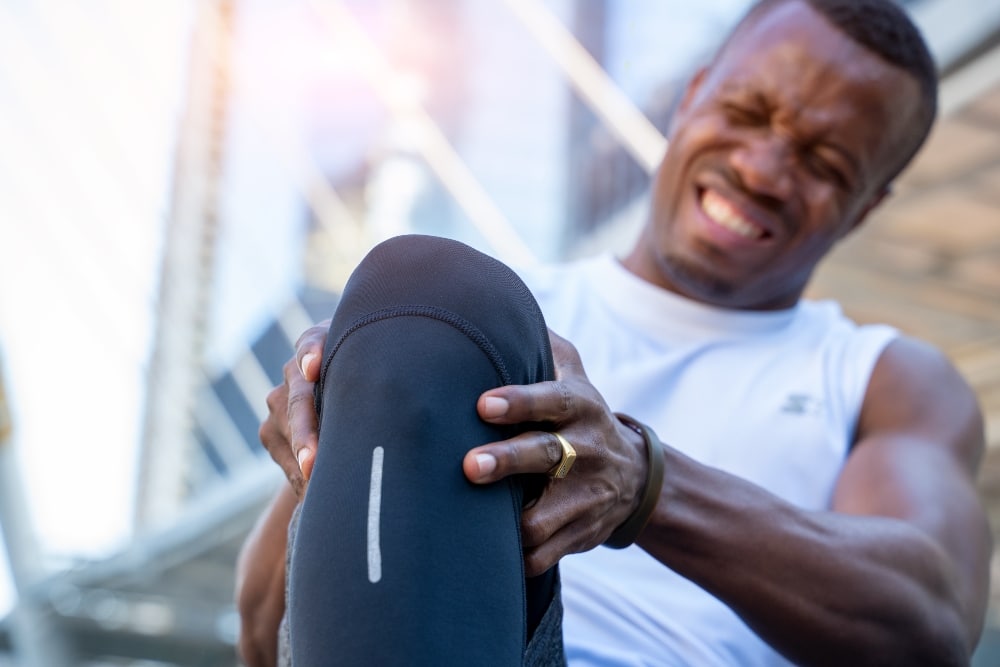Table of Contents
Introduction
If you want to send a chill down an athlete’s spine, just say, “Knee injury.”
Knee injuries can come in several forms, from ligament tears to meniscus tears to fractures, and all of them can be terrifying. The pain and swelling that can happen is bad enough, but there can also come uncertainty as to whether you may need surgery to address a severe injury and if your knee will ever be fully the same again afterward.
Whenever a patient experiences a knee injury, our goal at Premier Podiatry & Orthopedics is always to provide a route of treatment that provides for optimal recovery with as little risk of complications as possible. When all is said and done, however, we also want to do what we can to help prevent knee injuries in the first place!
When it comes to knee injuries, prevention and risk reduction will always be worth the investment. Fortunately, there are many simple, common sense steps you can take to not only shrink your odds of experiencing a knee injury but also make it more likely that any injuries you may happen to suffer are less severe than they could have been.

Warm-Up and Cool Down
Warm-ups might feel “optional” sometimes, but they should always be worked in before any sort of higher intensity activity, whether that be a workout, game, or training session.
Taking several minutes to warm up will help adjust your body to the increased demands you will be putting it through. That can help reduce shock to your knees as you transition to more intense work.
A proper warm-up should incorporate dynamic stretching, which essentially means movement. Some light jogging, knee lifts, and walking lunges all fit within this category.
After your session, taking a few minutes to cool down can help adjust your body to a more relaxed state. This is the time when your focus should rely more on static stretching, i.e. holding poses.
Stretch Outside of Warmups, Too
Stretching does not just have to be a good part of warming up. When part of a regular routine, it can also help strengthen and condition your knees and connected areas that may be placing excess stress on them.
It is always recommended that you discuss an ideal stretching routine with us or your primary care physician, but here are a couple of examples to demonstrate the types of motions we may suggest.
NOTE: Stop any stretch immediately if it begins to cause you pain.
Quad Stretch
Tight quads can exert more pressure on the kneecap and can lead to pain felt behind it. This stretch targets the quad muscles.
- Lie on your side, keeping your bottom leg straight.
- Bend your top knee so your foot is near your backside.
- Hold your top foot with your hand, gently pulling it toward your backside. Keep your hips firm and try not to rock them as you hold for 30 seconds.
- Switch sides and repeat.
Figure Four Stretch
(No, it’s not the wrestling move. Not exactly.)
This stretch targets the glutes, where tightness can also place pressure on the knees.
- Lie on your back.
- Cross your right foot over your left leg, above the left knee. Hold the back of your left leg and gently pull it toward your chest.
- Once you feel a stretch, hold for 30 seconds.
- Switch sides and repeat.

Wear the Right Equipment
Whatever the sport or activity, having the right equipment can help ensure proper protection, support, and technique.
An item doesn’t have to be worn around your knees to benefit them. Shoes that properly support your feet and ankles, for example, can lend stability through your legs, knees, and hips as well.
(Of course, if the activity does involve the use of knee guards or other equipment surrounding the knee, make sure to wear it!)
Every piece of equipment you wear should fit properly, provide substantial support, and not be broken or worn out.
Maintain a Steadier Pace
Many knee injuries come as the result of sudden changes in intensity, especially when quick starts, stops, turns, and pivots are involved.
We know you can’t always prevent such bursts – especially in the heat of action during a game – but it can still pay to be mindful of what your knees are currently going through. If you know you’re starting to push yourself beyond your normal limits, start to dial things back. And if you start feeling pain or discomfort, take a break and assess your condition!
Never Delay Treatment for a Knee Injury
Should you ever feel sudden pain in your knee, or suspect a knee injury for any other reason, your best course of action is to stop whatever you’re doing and take weight off your knee as soon as possible.
Trying to “walk it off” or push through pain before you fully understand the problem means a much higher risk of further injury – and with further injury typically comes longer overall recovery and the potential for future complications.
We will thoroughly examine your knee and learn all we can about the circumstances surrounding your injury. Once we have enough information, we can then suggest a treatment plan to address the issue and help you get back to action as quickly and as safely as possible.
Many problems can be resolved with conservative treatments. However, more severe or unresponsive cases might need more advanced therapies or surgery. We will fully discuss all your options with you and answer any questions you might have before you need to make any decision regarding your care.
Schedule an appointment with Premier Podiatry & Orthopedics by calling (916) 961-3434 or by filling out our online contact form.
Looking to schedule an appointment with a physician?
Schedule an appointment with us by calling (916) 961-3434 or by clicking the button below to begin requesting your appointment today!



